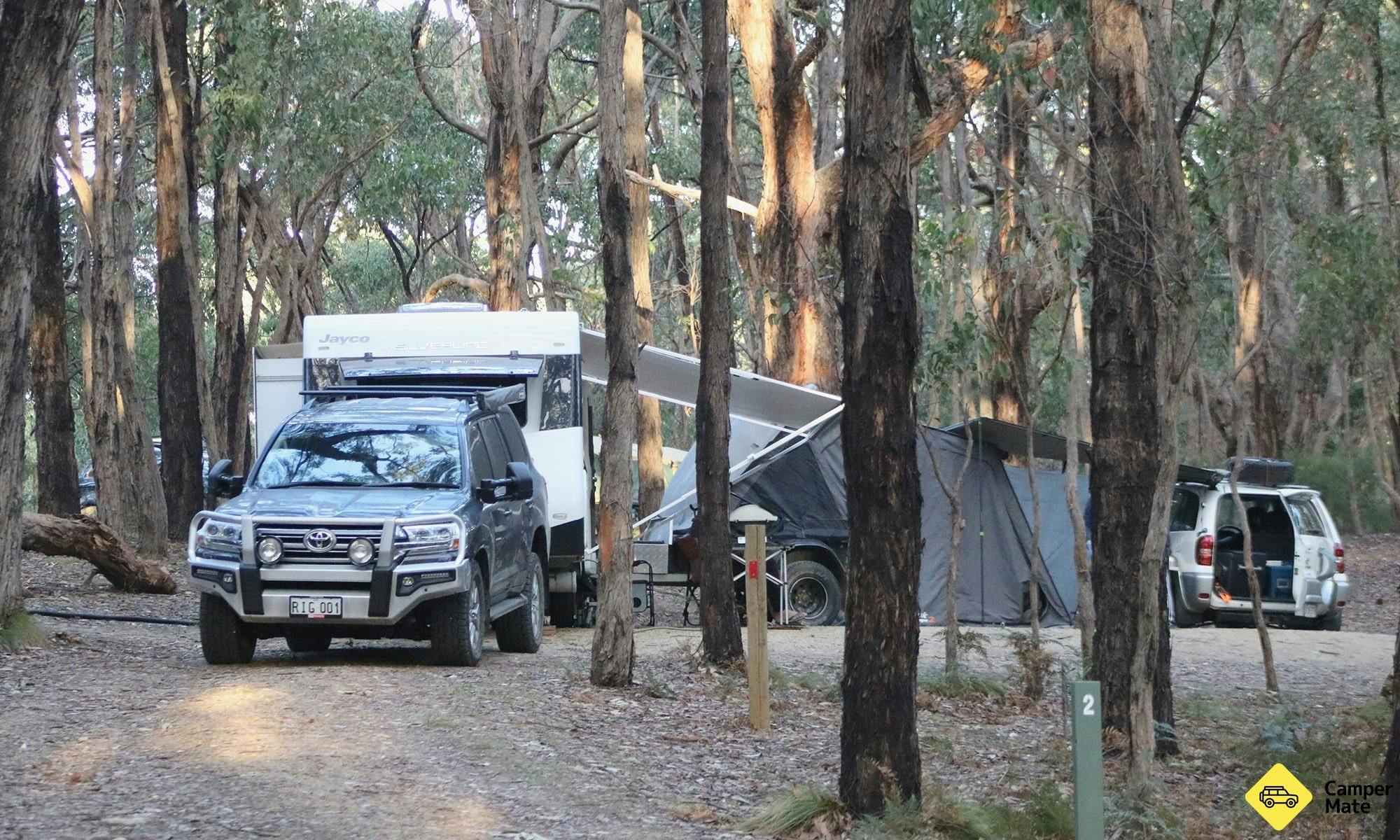
South Australia
Deep Creek Forest Camping
June 15, 2021 • Glenys Gelzinis
4 min read
Shafts of sunlight slice their way through the trees in the crisp, cool morning and while I’m enjoying a warming cup of coffee it’s soon obvious that I’m not alone. Also sharing this serene ambiance are western grey kangaroos and kookaburras. This is what it’s like to wake up in Deep Creek Conservation Park on South Australia’s Fleurieu Peninsula. The park is a little over 100 kilometres south of Adelaide, but the thick natural bushland of stringybark and grass trees, makes you feel a world away from civilization.
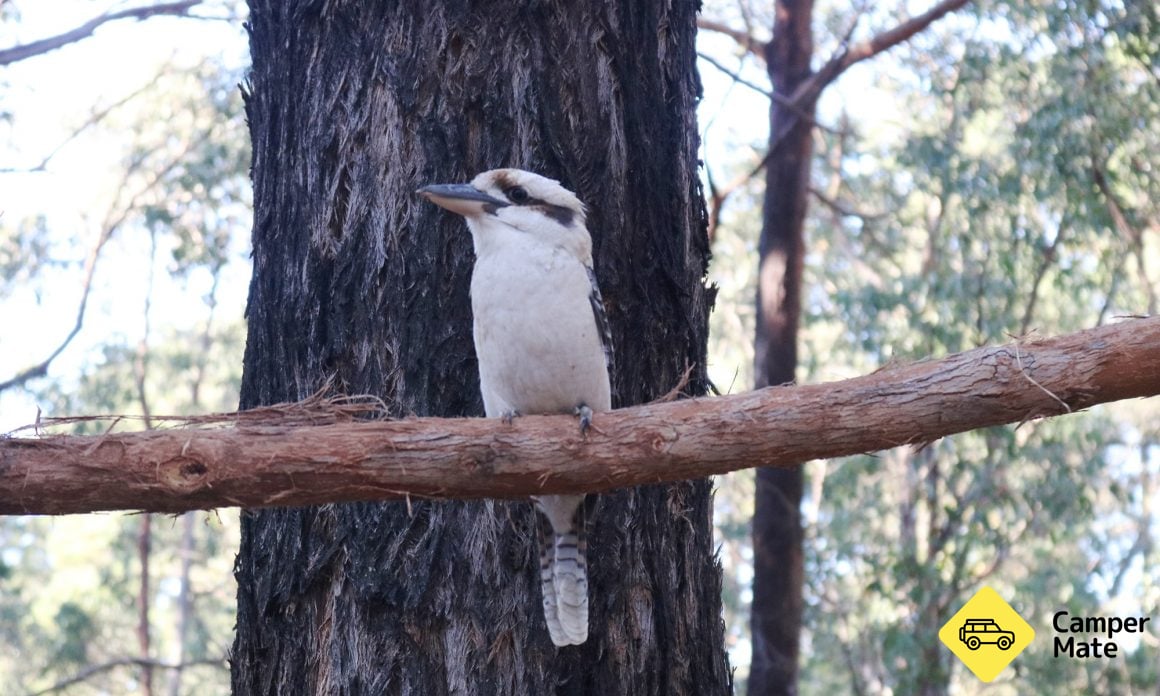
Camping
All of the roads within Deep Creek are unsealed but a conventional vehicle can handle them fine. Within the park you have the choice of five campgrounds to stay in, one of which is a hike-in only camp. The others can all be reached by conventional vehicles, but having a 4WD will enable you to see more places within the park.
All of the campgrounds are within a few kilometres of each other and have toilets and fire pits to use with your own supply of firewood. There are designated camping sites which you have to book before arriving and each site specifies what it is best suited for. Three of the campgrounds, Trig, Cobbler Hill and Stringybark campgrounds, are suitable for caravans.
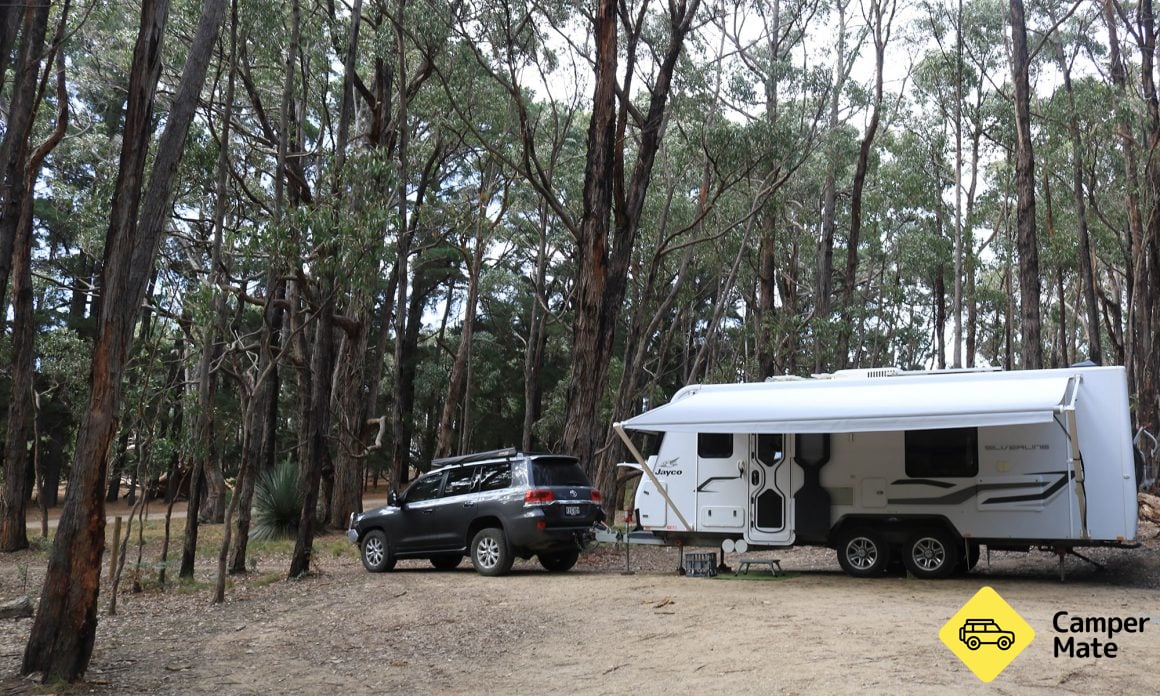
Room for caravans in Stringybark campground
My pick of the campgrounds for a caravan is Stringybark, which has 16 designated campsites all well-spaced from each other, and all have paths leading to the central ablution block which has flushing toilets and hot showers. The campground is ringed by the forest and therefore provides plenty of shade and wind protection. Autumn through to spring are the ideal times to camp in Deep Creek when campfires are permitted and clear nights enable you to see the star-filled night sky through gaps in the tree tops.
See what other campers are saying about Stringybark Campground on your CamperMate app.
Wildlife
During the day you can spot a wide range of birds including kookaburras, crimson rosellas and fairy wrens and in the quiet of the morning you’re likely to see the western grey kangaroos grazing, and moving through the campground unfazed by those camping. We also saw deer bounding through the forest and if you’re lucky you may also see short-beaked echidnas which live here.
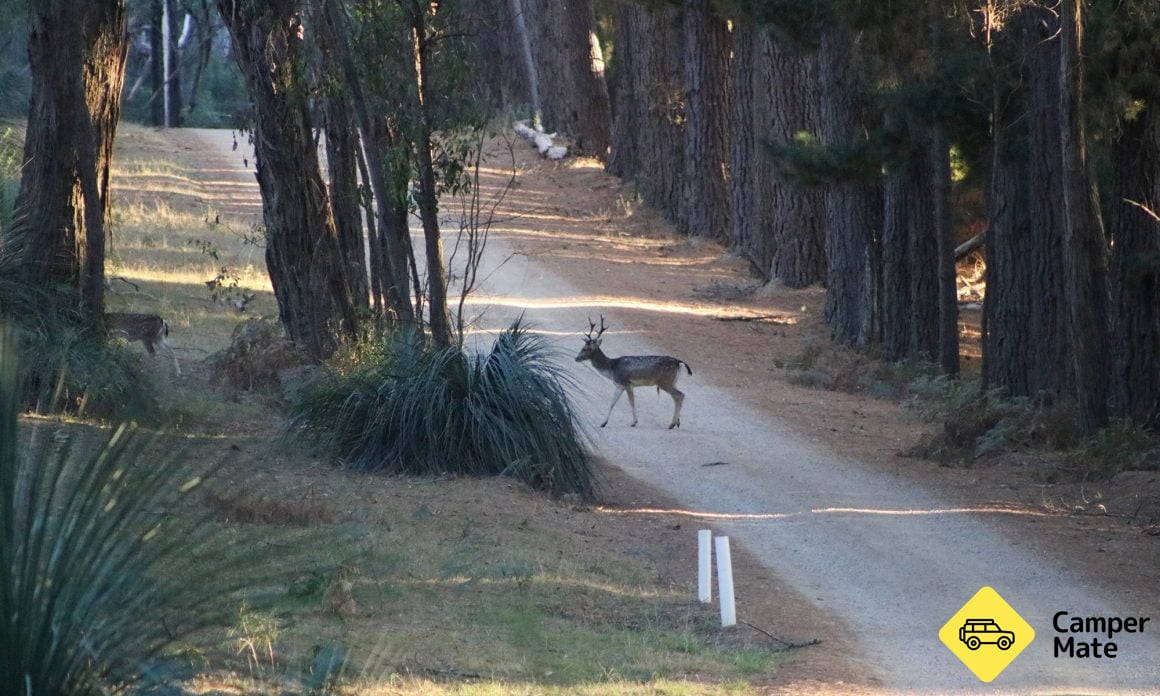
Deer in Deep Creek Conservation Park
During the winter months the rugged coastline of the conservation park has whales cruising past as they migrate through this region. They can usually be spotted from May through to October and can include southern right whales, humpbacks, sperm whales and blue whales.
4WD Trails
To get to the best vantage points and beaches to see the whales, you’ll need a 4WD. The tracks to Boat Harbour Beach and Blowhole Beach are only accessible by 4WD and one look at the steep descents will leave you in no doubt why.
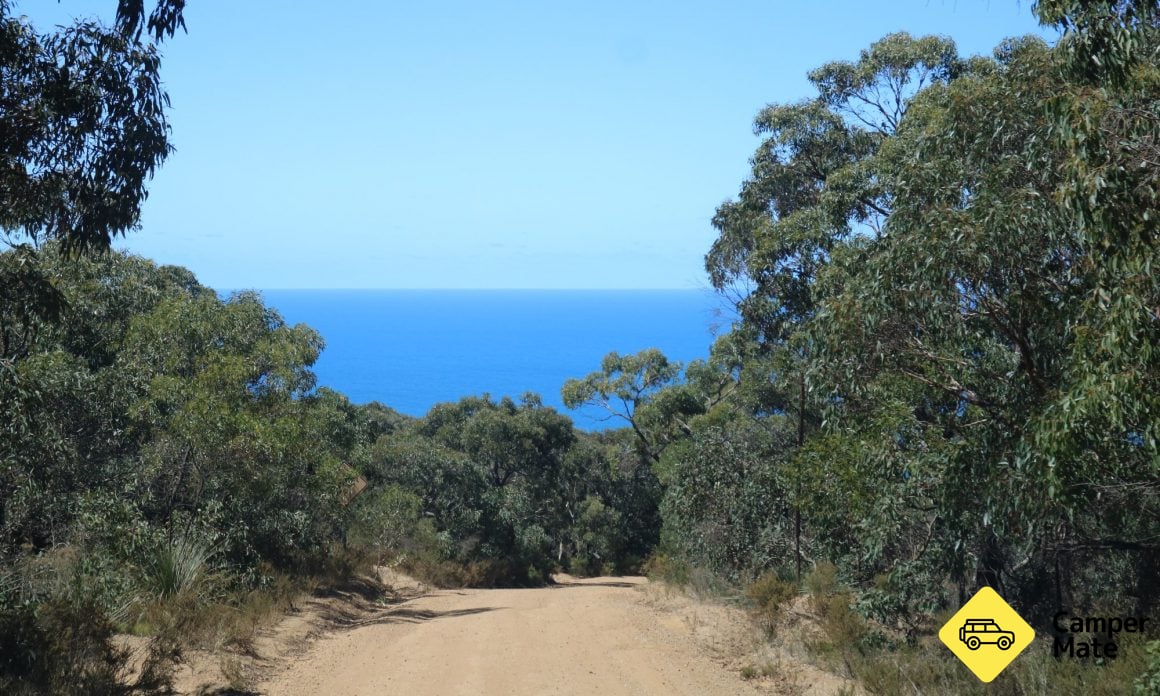
Track to Blowhole Beach
Both of the beach tracks take you through more thick natural scrub before the dirt roads dive steeply and you have to carefully edge your way to the end, where there are car park areas. From here you can walk to the beaches. Blowhole beach is a popular destination for its sheer spectacular ocean and coastline views as well as for its surf and fishing. The landmass you see in front of you at this point is Kangaroo Island.
Bushwalking
Another way to take in the beautiful natural environment is to go for a bushwalk on any of the 15 walking trails in the park. There are walks suitable for all ages and abilities, ranging from easy short circuits to whole day and longer hikes for experienced bushwalkers.
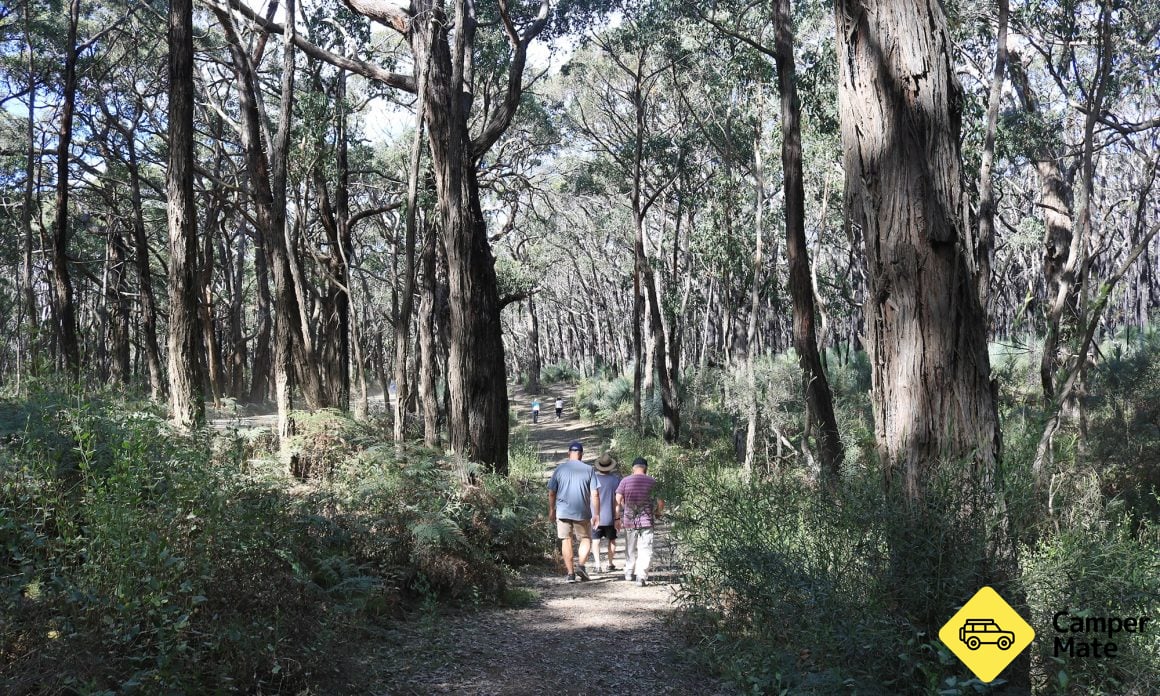
Forest circuit walk
From Stringybark Campground there are a few well sign posted tracks to take including a spring wildflower walk and a forest circuit walk. The circuit walk is an easy one, which takes you on a trail through the forest, passing grass trees, natural scrub and ferns on the forest floor. Every member of the family can tackle this walk and it has only slight inclinations along its 2.6 kilometres.
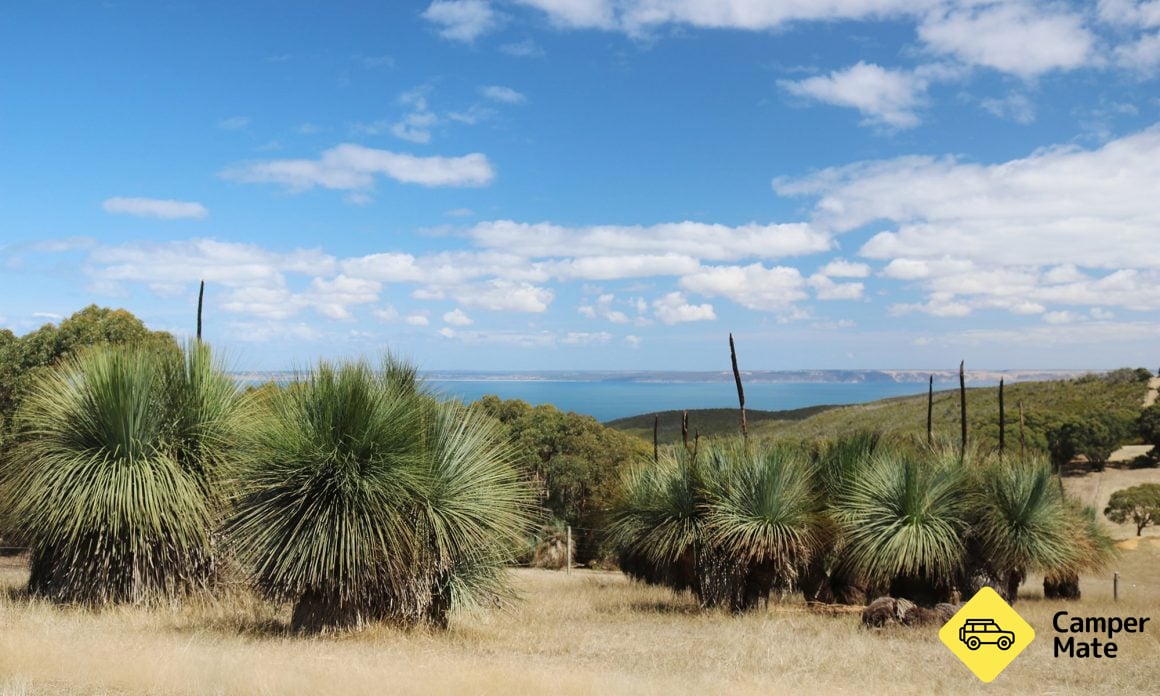
Grass trees (Xanthorrhoea) are a big feature of the park
Fees
There is an entry fee per vehicle to visit Deep Creek Conservation Park which can be paid online on the National Parks and Wildlife Service SA website. There is limited phone reception in the park so if you are planning on camping in the park, you need to book and pay camping fees before arriving. The beauty of that is you’ll have a designated campsite waiting for you when you arrive.
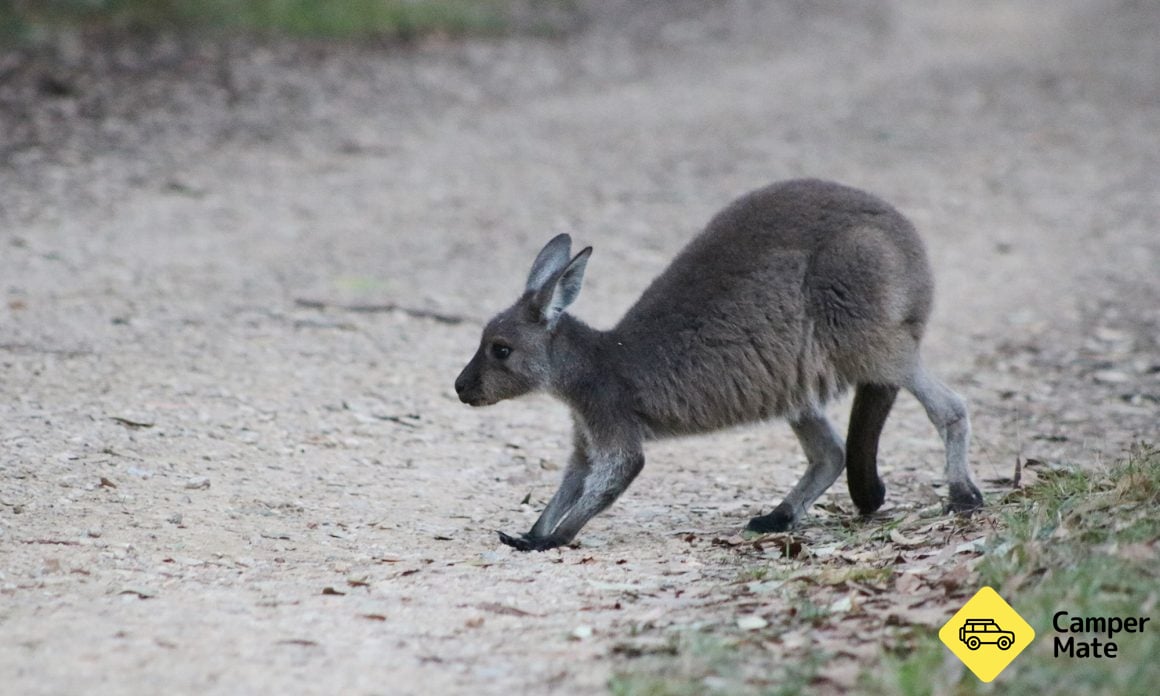
Western grey kangaroo joey

